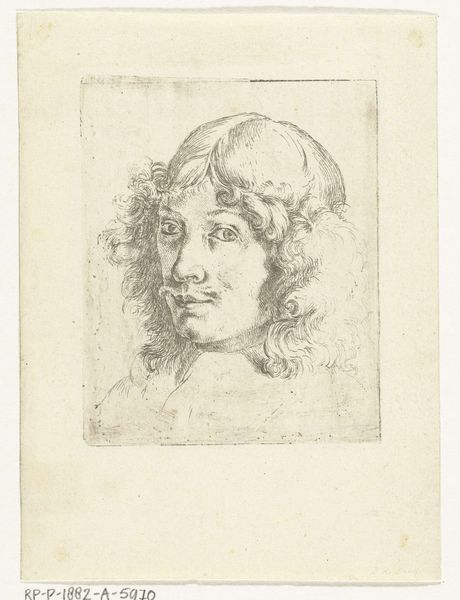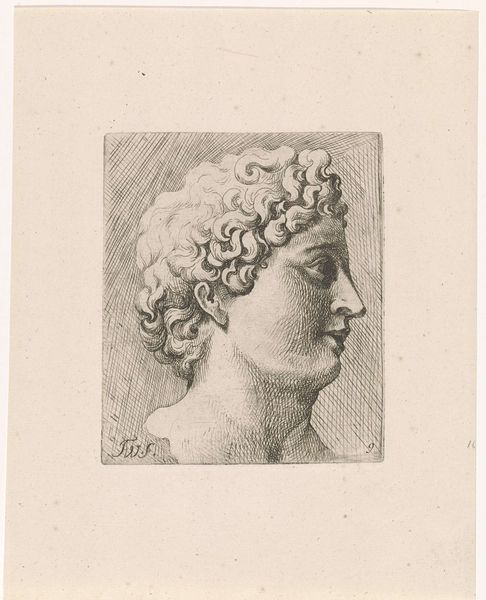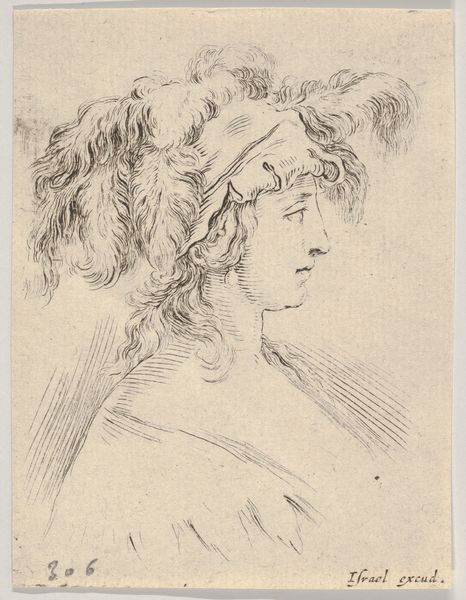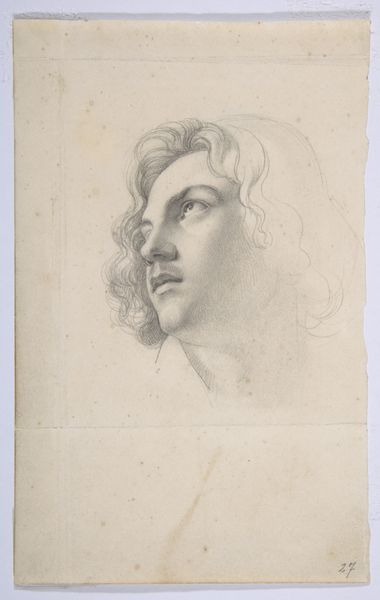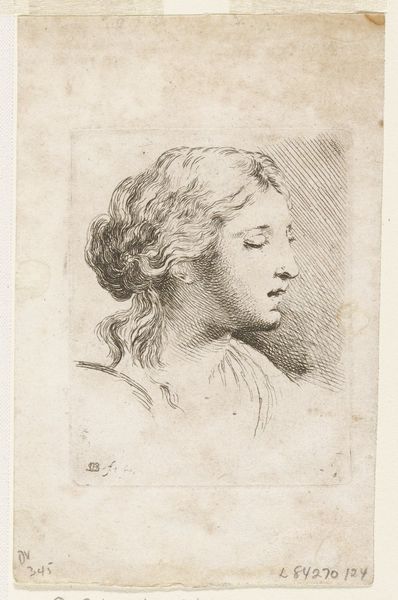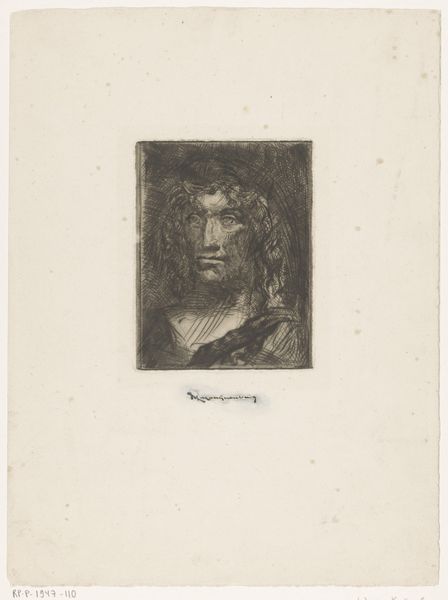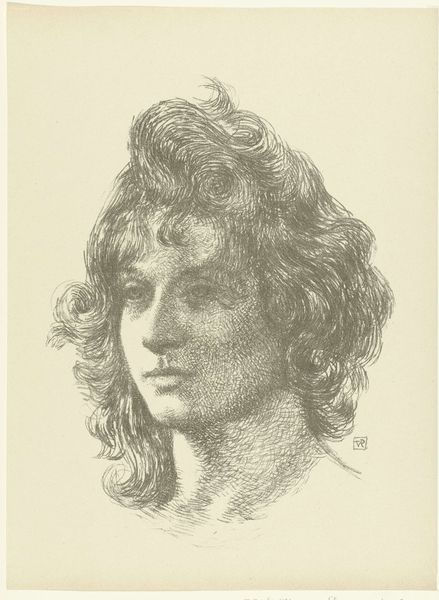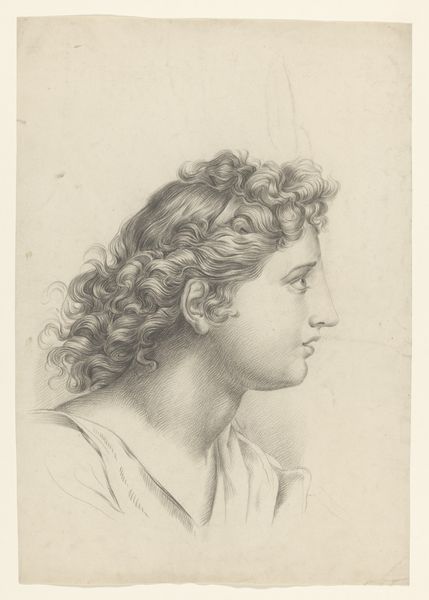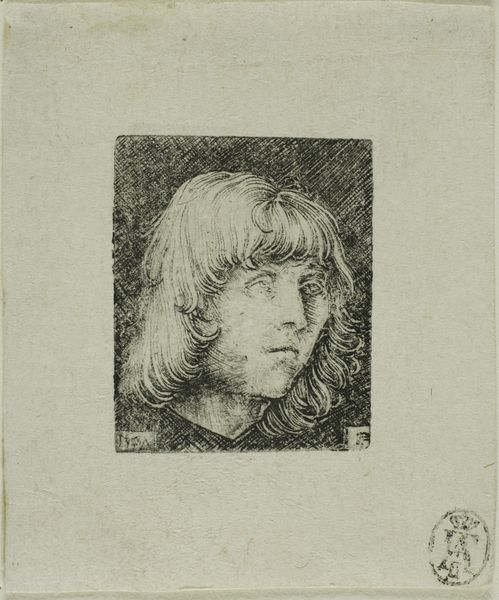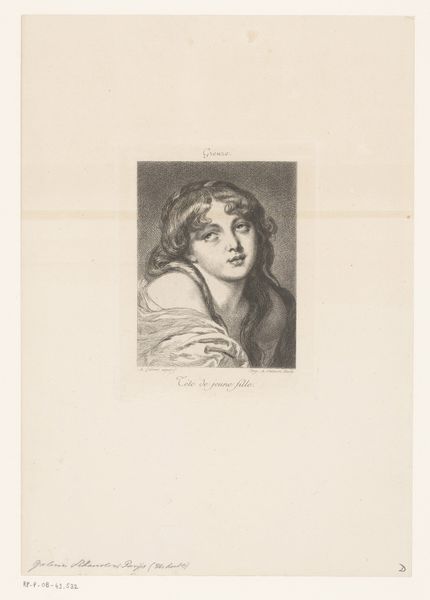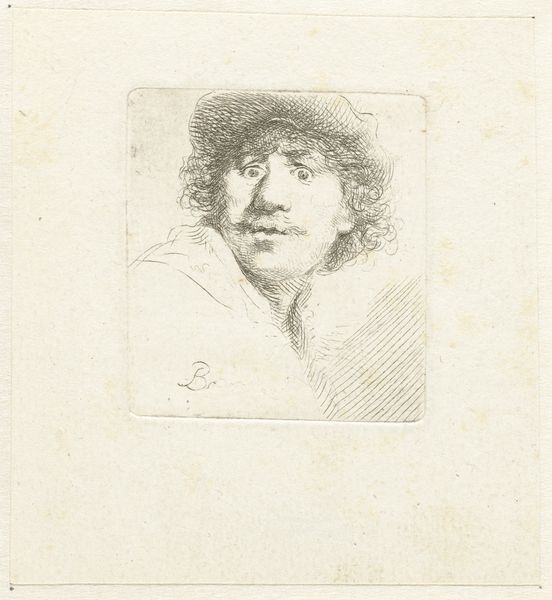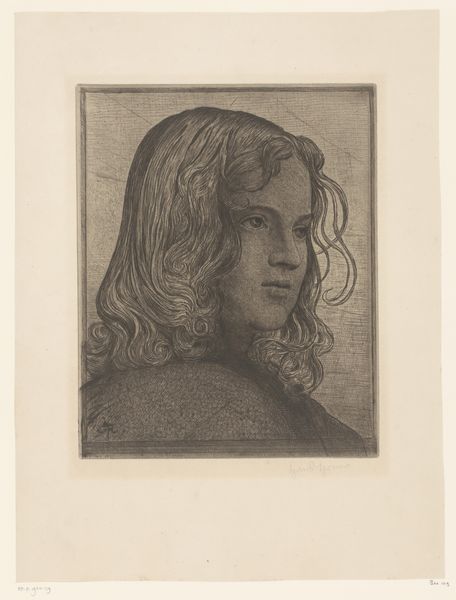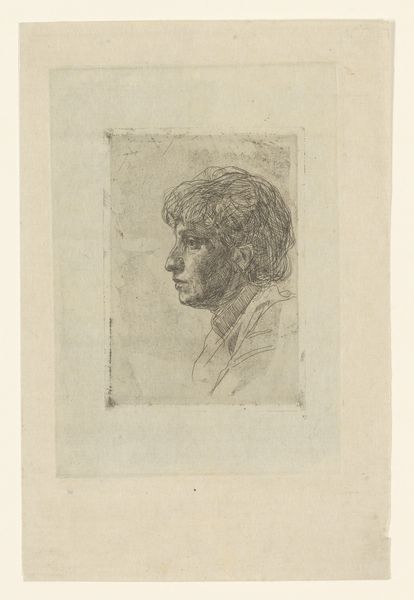
Dimensions: height 133 mm, width 110 mm
Copyright: Rijks Museum: Open Domain
Johannes Arnoldus Boland created this etching, titled "Zelfportret van Dirck de Bray," sometime in the late 19th or early 20th century. It’s a copy of a self-portrait, hence ‘Zelfportret’, by Dirck de Bray. The image evokes the Dutch Golden Age, a period of great wealth for the Dutch Republic, but also one defined by stark class divisions. Boland would have known de Bray's work from museum collections and art historical publications. He was working at a time when printmaking was being revived as a fine art. The etching medium was especially popular with artists looking back to the art of previous centuries. Boland seems to be emulating the loose and informal character of 17th-century portrait etchings. As art historians, we are trained to ask why an artist like Boland would choose to copy an image from the past. What did the Dutch Golden Age represent to artists working in the late 19th century? Researching the institutional histories of museums and art academies could give us some valuable clues.
Comments
No comments
Be the first to comment and join the conversation on the ultimate creative platform.
